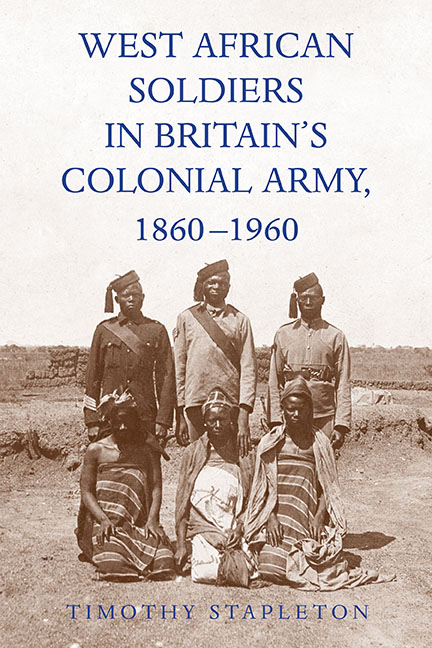Book contents
5 - Symbols
Published online by Cambridge University Press: 07 October 2022
Summary
Scholars easily dismiss the history of military visual symbols such as uniforms, badges, flags, and ceremonies as inconsequential and antiquarian. However, symbols like these have long constituted a feature of soldiers’ daily experience and have played an important role in forging military identities and military culture. In South Asia, the British colonial reinvention of Indian military identities during the nineteenth century revolved partly around the introduction of new visual elements like insignia and uniforms. Similarly, Britain's West African army of the late nineteenth to mid-twentieth centuries used visual symbols to nurture a colonial military culture that maintained the colonial state. Soldiers from colonial Nigeria, Gold Coast, Sierra Leone, and the Gambia wore symbols, carried symbols, participated in rituals around symbols, and represented symbols themselves. British officers and officials invented these visual symbols and the traditions associated with them in a program to build an imagined military community within West Africa's colonial society. Such symbols conveyed ideas about military service designed to enhance soldiers’ morale and therefore enhance military effectiveness, but these devices also said something about the West African soldier's position within regional colonial society and the larger British Empire. Within the context of interpretations of empire, it is possible to understand these symbols as concurrently “orientalist” in that they presented an exoticized image of West Africans as an inferior and racialized “other” and “ornamentalist” in that they reproduced a socially hierarchical empire and promoted affinities between colony and metropole. These military symbols included uniforms, military bands and music, insignia and unit flags (or “colours”), and the involvement of West African soldiers in public spectacles particularly in Britain. Regrettably, and typical of the history of colonial Africa, Britain's West African soldiers did not leave behind their own accounts of how they viewed these symbols, leaving historians to depend on evidence authored by colonial observers.
Uniforms
Uniforms comprise a central element of military life. Broadly speaking, uniforms encourage the “militarizing of civilian bodies” transforming “individual strength into collective power.” The enormous economic and technological resources mobilized by governments to manufacture uniforms speak to their centrality in developing militaries. Looking at the British example of the early 1800s, Scott Hughes Myerly states, “The uniform was the army's trademark and symbol—a distinctive dress that immediately set the soldier off from everyone else.”
- Type
- Chapter
- Information
- West African Soldiers in Britain's Colonial Army, 1860-1960 , pp. 167 - 202Publisher: Boydell & BrewerPrint publication year: 2021

